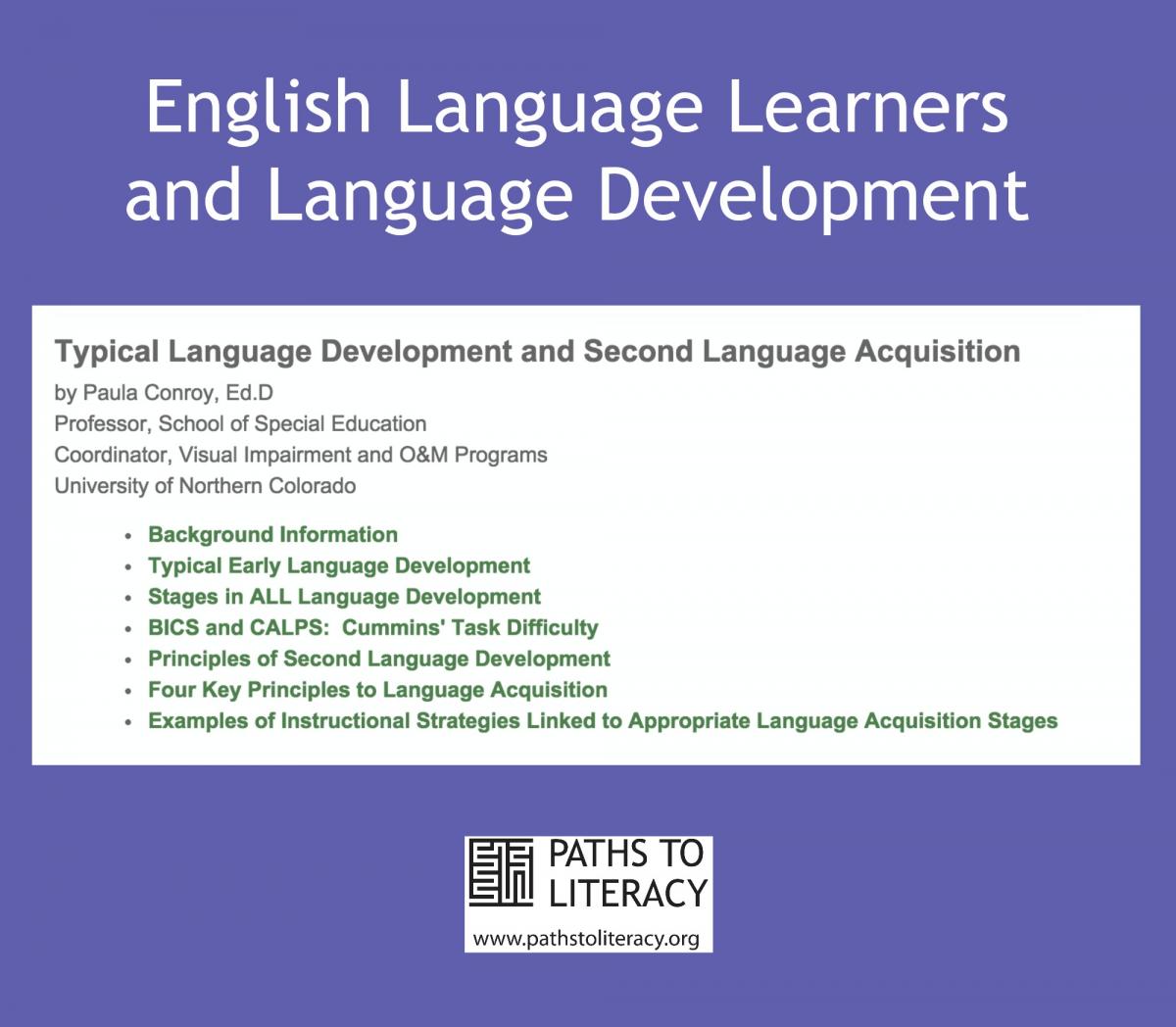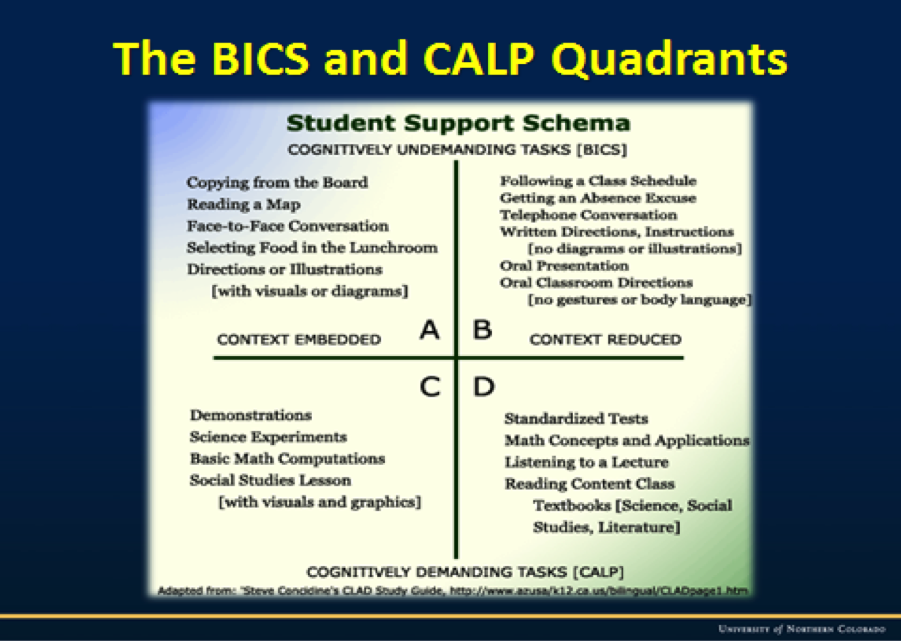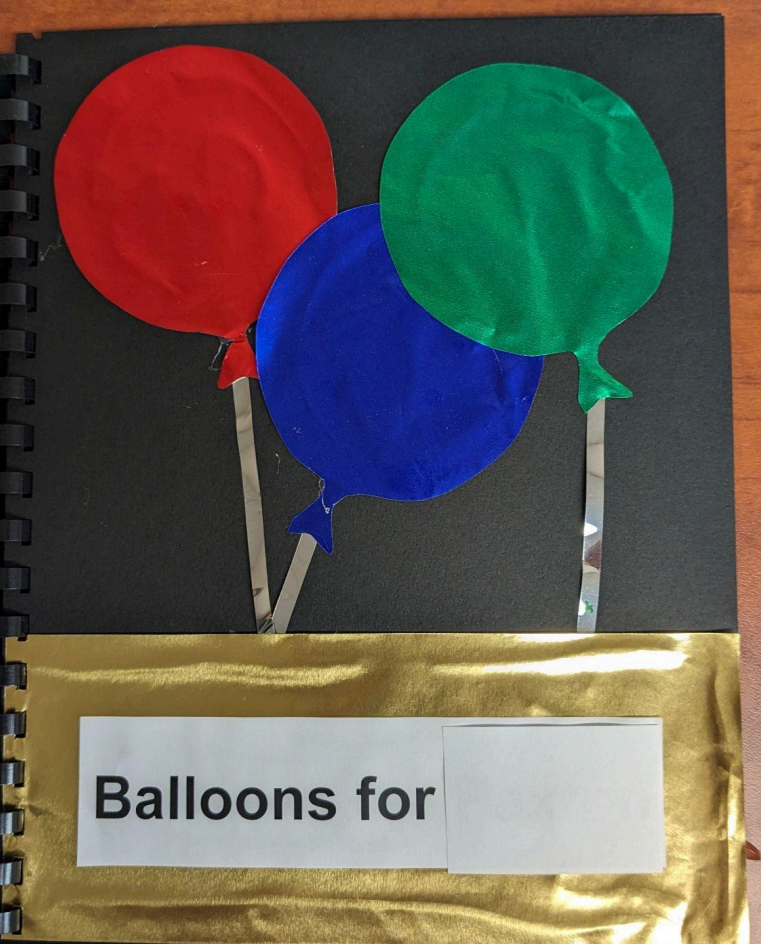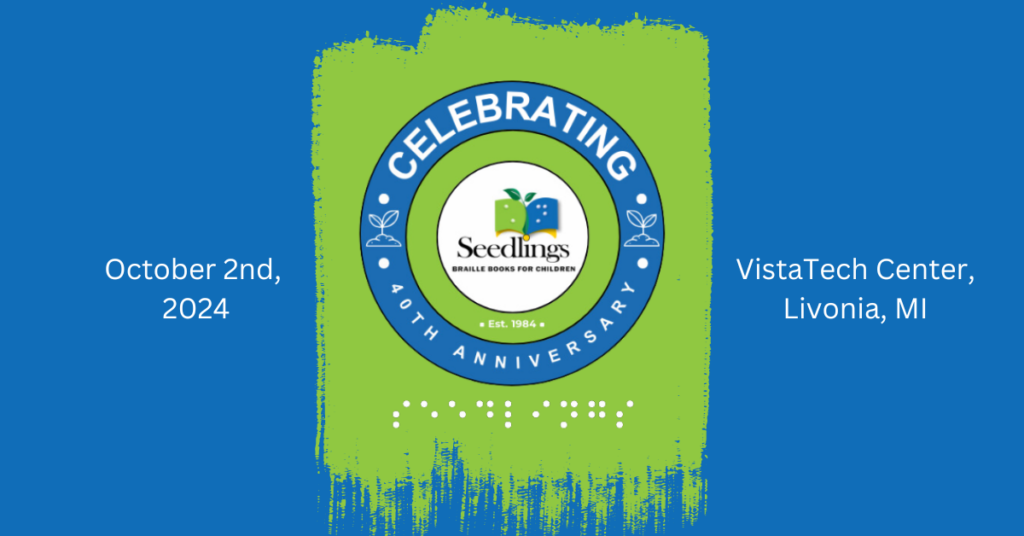Typical Language Development and Second Language Acquisition
by Paula Conroy, Ed.D
Professor, School of Special Education
Coordinator, Visual Impairment and O&M Programs
University of Northern Colorado
- Background Information
- Typical Early Language Development
- Stages in ALL Language Development
- BICS and CALPS: Cummins’ Task Difficulty
- Principles of Second Language Development
- Four Key Principles to Language Acquisition
- Examples of Instructional Strategies Linked to Appropriate Language Acquisition Stages
Background Information
The United States becomes more ethnically and linguistically diverse every year. The demographics are clearly changing:
- 19.5% of the U.S. populations speaks languages other than English
- 65% of bilingual people living in the U.S. speak Spanish, followed by French, Chinese and German.
- By 2030, the number of school-aged children who speak a language other than English is expected to grow to 40%
- All states in the nation have ELL (English Language Learners).
- 80.4 % of students identified as CLDE (Culturally and Linguistically Diverse students with Exceptionalities) speak Spanish as a first language.
English Language Learners (ELLs) is a current term used to describe the population of students whose native language is other than English and who are in the process of learning the English language. Other terms include English Learners (EL) and Limited English Proficient (LEP). EL or ELL is the current federal term used but you may still see LEP in some contexts. This term is viewed as less politically correct.
While there is no current accurate counting mechanism in place to determine the number of ELL’s with visual impairment, it has been estimated that the number is growing at the same rate as the general population of ELL’s (Milian, Conroy, Correa-Torres, in press). Since this population of students has unique educational needs, teachers of students with visual impairments (TVIs) must be knowledgeable of their role in addressing both the language and educational needs of students with visual impairments. While there may be a language teacher involved with addressing language needs, the TVI will need to assist with developing appropriate programs that are accessible to students with visual impairments.
Since this population of students has unique educational needs, TVI’s must be knowledgeable of both typical language development and the second language acquisition process as a start. With this solid background TVI’s can implement related teaching strategies in order to make appropriate educational decisions for intervention.
Typical Early Language Development
|
0-3 Months |
Fussing, crying, cough, sneeze |
|
3-4 Months |
Laughs, chuckling |
|
4-6 Months |
Babbling sounds like speech of native language |
|
6 months- 2 years |
Exponential Language Growth |
|
3 years |
Children know about 515-1,116 words |
|
8 Years |
Children know about 6,000 words |
|
18 Years |
Children know about 175,000 words |
Stages in ALL Language Development
- Pre-production (silent period): minimal comprehension; no verbal production;
- Early Production: Limited comprehension; one to two word responses; random errors;
- Emergent stage: increased comprehension; simple sentences; unable to correct errors; possible backsliding (plateau);
- Intermediate fluency stage: Good comprehension; more complex sentences; complex errors in speech; able to correct errors when they are pointed out;
- Stabilization stage: No problem with fluency and intended meanings; able to self-correct errors; possible fossilization (carry L1 into L2 permanently).
BICS & CALPS: Cummins’ Task Difficulty
Principles of Second Language Development
- Some primary language skills will transfer to second language skills (e.g. analysis, learning strategies)
- Academic proficiency in primary language facilitates academic language in English
- High quality direct language instruction is required
- English language learners need enhanced, explicit vocabulary development
There are four key principles to language acquisition:
- Increase Comprehensibility
- Increase Interaction
- Increase Thinking/Study Skills
- Use the child’s native language to increase comprehensibility
Examples of Instructional Strategies Linked to Appropriate Language Acquisition Stages
This chart shows each of the five stages of second language acquisition linked to appropriate and specific instructional strategies.
|
Silent/ Receptive |
Early Production |
Speech Emergence |
Intermediate /Stabilization |
|
Use of visual aids and gestures |
Engage students in charades and linguistic guessing games |
Conduct group discussions |
Sponsor student panel discussions on the thematic topics* |
|
Slow speech emphasizing key words |
Do role-playing activities |
Use skits for dramatic interaction |
Have students identify a social issue and defend their position* |
|
Do not force oral production |
Present open-ended sentences |
Have student fill out forms and applications* |
Promote critical analysis and evaluation of pertinent issues |
|
Write key words on the board with students copying them as they are presented |
Promote open dialogues |
Assign writing compositions |
Assign writing tasks that involve writing, rewriting, editing, critiquing written examples* |
|
Use pictures and manipulatives to help illustrate concepts |
Conduct student interviews with the guidelines written out |
Have students write descriptions of visuals and props |
Encourage critical interpretation of stories, legends, and poetry* |
|
Use multimedia language role models |
Use charts, tables, graphs, and other conceptual visuals |
Use music, TV, and radio with class activities |
Have students design questions, directions, and activities for others to follow |
|
Use interactive dialogue journals |
Use newspaper ads and other mainstream materials to encourage language interaction* |
Show films and videos with cooperative groups scripting the visuals |
Encourage appropriate story telling |
|
Encourage choral readings |
Encourage partner and trio readings |
Encourage solo readings with interactive comprehension checks* |
|
|
Use Total Physical Response (TPR) techniques |
|
|
|
*It is important to structure activities that are both age and linguistically appropriate.





